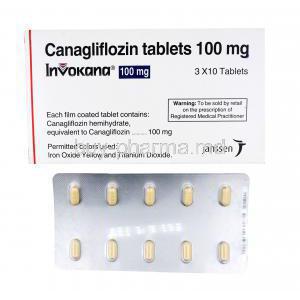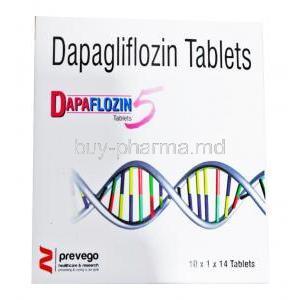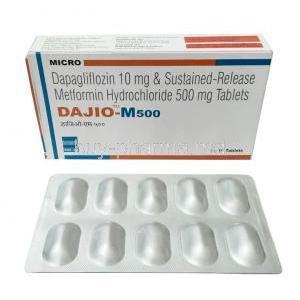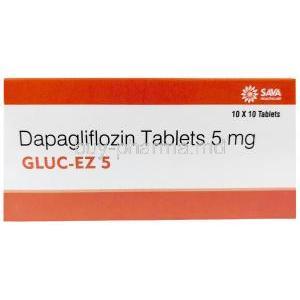I. Introduction to Glibenclamide/Metformin
Overview of Glibenclamide/Metformin
Glibenclamide/Metformin is a potent oral antidiabetic combination therapy. It is widely prescribed for managing Type 2 diabetes mellitus. This combination capitalizes on the synergistic effects of two pharmacological agents, effectively lowering blood glucose levels. By targeting different pathways, Glibenclamide/Metformin helps maintain glycemic control in patients who struggle with monotherapy.
History and Development
Glibenclamide, a sulfonylurea, was first introduced in the 1960s. Metformin, a biguanide, has roots dating back to the 1920s, but its clinical use began in the 1950s. The combination of Glibenclamide and Metformin was developed to enhance the therapeutic effects and minimize the side effects associated with higher doses of single agents. This dual therapy became an essential tool in diabetes management, particularly for those patients who require more intensive treatment regimens.
Purpose of the Combination Therapy
The primary purpose of combining Glibenclamide with Metformin is to leverage their complementary mechanisms of action. Glibenclamide stimulates insulin secretion, while Metformin decreases hepatic glucose production and improves insulin sensitivity. Together, they provide a comprehensive approach to managing hyperglycemia, reducing the need for multiple medications, and simplifying treatment protocols.
II. Composition of Glibenclamide/Metformin
Active Ingredients
Glibenclamide/Metformin tablets contain two active ingredients:
- Glibenclamide: A sulfonylurea that promotes insulin release from pancreatic beta cells.
- Metformin: A biguanide that reduces hepatic glucose production and increases insulin sensitivity in peripheral tissues.
Formulations Available (Tablets, Extended-Release)
Glibenclamide/Metformin is available in both immediate-release and extended-release tablet formulations. The immediate-release formulation provides rapid absorption and action, while the extended-release version allows for gradual drug release, ensuring sustained blood glucose control throughout the day.
Strengths and Dosage Forms
The combination is typically available in various strengths, such as 2.5 mg/500 mg, 5 mg/500 mg, and 5 mg/1000 mg of Glibenclamide/Metformin, respectively. These different strengths allow for flexibility in dosing, accommodating individual patient needs based on their glycemic control and tolerance to the medications.
III. How Glibenclamide/Metformin Works
Mechanism of Action of Glibenclamide
Glibenclamide works by stimulating insulin secretion from the pancreatic beta cells. It binds to the sulfonylurea receptor on the cell surface, leading to the closure of ATP-sensitive potassium channels. This action results in the depolarization of the cell membrane and subsequent calcium influx, which triggers insulin release.
Mechanism of Action of Metformin
Metformin primarily acts by reducing hepatic glucose production through the inhibition of gluconeogenesis. Additionally, it enhances insulin sensitivity by increasing glucose uptake in peripheral tissues, particularly skeletal muscles. Metformin also reduces intestinal absorption of glucose, further contributing to its antihyperglycemic effects.
Synergistic Effects in Combination Therapy
The combination of Glibenclamide and Metformin offers a synergistic effect, as they target different aspects of glucose metabolism. While Glibenclamide enhances insulin secretion, Metformin decreases glucose production and improves insulin sensitivity. This complementary action results in more effective glycemic control with a lower risk of adverse effects associated with high doses of a single agent.
IV. Uses of Glibenclamide/Metformin
Primary Indications
Management of Type 2 Diabetes Mellitus
Glibenclamide/Metformin is primarily indicated for the management of Type 2 diabetes mellitus. It is especially beneficial for patients who do not achieve adequate glycemic control with diet, exercise, and monotherapy. By combining the insulinotropic effect of Glibenclamide with the insulin-sensitizing properties of Metformin, this combination therapy effectively lowers blood glucose levels and improves overall metabolic control.
Off-Label Uses
Potential Use in Polycystic Ovary Syndrome (PCOS)
Although not officially approved for this indication, Glibenclamide/Metformin has shown potential in the management of Polycystic Ovary Syndrome (PCOS). Metformin, in particular, is known to improve insulin resistance, a common feature in PCOS, thereby helping to restore normal menstrual cycles and improve fertility outcomes.
Investigational Use in Prediabetes Management
There is ongoing research into the use of Glibenclamide/Metformin in the management of prediabetes. Early studies suggest that the combination may help delay the progression from prediabetes to full-blown Type 2 diabetes by improving insulin sensitivity and reducing hyperglycemia.
V. Dosage and Administration of Glibenclamide/Metformin
Standard Dosage Guidelines
The standard dosage of Glibenclamide/Metformin varies depending on the patient's glycemic control, renal function, and tolerance to the medication. Typically, therapy is initiated with a low dose, which is gradually titrated based on the patient's response. For most patients, a starting dose of 2.5 mg/500 mg once or twice daily is recommended, with adjustments made according to blood glucose levels.
Adjustments for Renal and Hepatic Impairment
In patients with renal or hepatic impairment, dosage adjustments are crucial to minimize the risk of adverse effects. Metformin is contraindicated in patients with severe renal dysfunction due to the risk of lactic acidosis. Glibenclamide should be used with caution in patients with hepatic impairment, and lower doses may be necessary.
Administration Instructions
Timing of Dosing with Meals
Glibenclamide/Metformin should be taken with meals to reduce the risk of gastrointestinal side effects, particularly with Metformin. The timing of dosing is essential to optimize the drug's efficacy and minimize the risk of hypoglycemia, which can occur if Glibenclamide is taken on an empty stomach.
Missed Dose Management
In case of a missed dose, patients are advised to take the missed dose as soon as they remember, unless it is almost time for the next dose. In such cases, the missed dose should be skipped, and the regular dosing schedule resumed. Doubling up on doses to make up for missed ones should be avoided to prevent hypoglycemia.
VI. Important Precautions with Glibenclamide/Metformin
Monitoring Blood Glucose Levels
Regular monitoring of blood glucose levels is imperative for patients on Glibenclamide/Metformin therapy. Frequent monitoring helps in adjusting the dosage and preventing complications such as hypoglycemia or uncontrolled hyperglycemia.
Hypoglycemia Risk and Prevention
Glibenclamide increases the risk of hypoglycemia, especially in elderly patients or those with renal impairment. Patients should be educated on recognizing the signs of hypoglycemia, such as sweating, dizziness, and confusion, and should carry a source of fast-acting glucose at all times. Adjustments in diet, physical activity, and medication may be required to mitigate this risk.
Importance of Adhering to Dietary Recommendations
Adherence to dietary recommendations is crucial for optimizing the effectiveness of Glibenclamide/Metformin. A balanced diet that is low in refined sugars and rich in fiber can enhance glycemic control and reduce the risk of adverse effects. Patients should be counseled on the importance of maintaining consistent carbohydrate intake to avoid fluctuations in blood glucose levels.
Exercise Considerations
Exercise is an integral part of diabetes management, and patients on Glibenclamide/Metformin are encouraged to engage in regular physical activity. However, they should be cautious of the potential for exercise-induced hypoglycemia, particularly if insulin or other hypoglycemic agents are also used. Monitoring blood glucose before and after exercise is recommended to prevent hypoglycemic events.
VII. Side Effects of Glibenclamide/Metformin
Common Side Effects
Gastrointestinal Symptoms (Nausea, Diarrhea)
The most common side effects associated with Metformin in the Glibenclamide/Metformin combination are gastrointestinal in nature. Patients may experience nausea, diarrhea, or abdominal discomfort, particularly when starting therapy or increasing the dosage. These symptoms are usually transient and can be minimized by taking the medication with food.
Hypoglycemia Symptoms (Dizziness, Sweating)
Glibenclamide, being a sulfonylurea, can cause hypoglycemia. Symptoms include dizziness, sweating, palpitations, and, in severe cases, loss of consciousness. The risk is heightened in patients with renal impairment, elderly patients, or those who skip meals. Prompt recognition and treatment of hypoglycemia are essential to avoid complications.
Less Common Side Effects
Allergic Reactions
Allergic reactions to Glibenclamide/Metformin are rare but can occur. Symptoms may include rash, itching, swelling, and, in severe cases, anaphylaxis. Patients with a history of hypersensitivity to sulfonylureas or biguanides should avoid this combination therapy.
Skin Reactions
Some patients may develop skin reactions such as erythema, pruritus, or urticaria. These reactions are typically mild and resolve with discontinuation of the medication. However, any severe or persistent skin reaction should be promptly evaluated by a healthcare provider.
VIII. Warnings and Contraindications
Absolute Contraindications
Severe Renal Impairment
Patients with severe renal impairment must avoid Glibenclamide/Metformin therapy. Metformin, a key component of this combination, is contraindicated due to its potential to accumulate in such patients, leading to lactic acidosis—a serious metabolic complication. In individuals with compromised kidney function, the drug's excretion is hindered, elevating the risk of this potentially fatal condition.
Hypersensitivity to Sulfonylureas
Another absolute contraindication is hypersensitivity to sulfonylureas. Glibenclamide belongs to this class of drugs, and any known allergy to sulfonylureas necessitates avoiding this medication. Reactions can range from mild skin rashes to severe anaphylactic reactions, which can be life-threatening. Careful patient history is crucial before initiating therapy.
Relative Contraindications
Heart Failure Patients
In patients with heart failure, Glibenclamide/Metformin should be used cautiously. Metformin has been associated with an increased risk of lactic acidosis, particularly in those with congestive heart failure requiring pharmacological treatment. The altered hemodynamics in heart failure may exacerbate the risk, and close monitoring is essential if therapy is deemed necessary.
Liver Disease Patients
Liver disease poses another relative contraindication. Hepatic impairment can affect drug metabolism, leading to higher systemic exposure to both Glibenclamide and Metformin. This can increase the likelihood of adverse effects, including hypoglycemia and lactic acidosis. Therefore, alternative therapies may be more appropriate for these patients.
IX. Drug Interactions with Glibenclamide/Metformin
Major Drug Interactions
Interaction with Insulin or Other Hypoglycemic Agents
Combining Glibenclamide/Metformin with insulin or other hypoglycemic agents can potentiate the risk of hypoglycemia. The dual mechanisms of action can lead to excessive lowering of blood glucose levels. Vigilant monitoring of blood glucose and adjustment of dosages is recommended to prevent severe hypoglycemic episodes.
Interaction with Alcohol
Alcohol consumption while on Glibenclamide/Metformin can lead to an increased risk of lactic acidosis and hypoglycemia. Alcohol can impair gluconeogenesis, particularly when combined with Metformin, leading to a dangerous drop in blood sugar levels. Patients should be advised to limit or avoid alcohol intake during treatment.
Potential Interactions with Over-the-Counter Medications
NSAIDs
Nonsteroidal anti-inflammatory drugs (NSAIDs) can interact with Glibenclamide/Metformin, potentially exacerbating hypoglycemia. NSAIDs may inhibit renal function, thereby reducing the excretion of Metformin and increasing its levels in the blood. Patients using NSAIDs concurrently should be monitored closely, and dose adjustments may be necessary.
Antacids
Antacids, particularly those containing magnesium and aluminum, can interfere with the absorption of Metformin. This interaction can reduce the drug's effectiveness in controlling blood glucose levels. To avoid this, patients should be instructed to take antacids at a different time than their Glibenclamide/Metformin dose.
X. Administration to Special Populations
Administration to the Elderly
Adjusting Dose Due to Decreased Renal Function
The elderly are more likely to experience decreased renal function, necessitating dose adjustments when administering Glibenclamide/Metformin. Reduced kidney function can lead to the accumulation of Metformin, increasing the risk of lactic acidosis. It is advisable to start at the lowest effective dose and titrate slowly while monitoring renal function regularly.
Risk of Hypoglycemia
Elderly patients are at a heightened risk of hypoglycemia due to potential changes in diet, physical activity, and renal function. The reduced clearance of Glibenclamide in this population further exacerbates this risk. Educating elderly patients on recognizing hypoglycemia symptoms and adjusting their lifestyle accordingly is crucial to prevent adverse events.
Administration to Pregnant Women and Nursing Mothers
Pregnancy Category and Recommendations
Glibenclamide/Metformin is classified under pregnancy category B. While animal studies have not shown harm to the fetus, there are limited well-controlled studies in pregnant women. The use of this combination during pregnancy should be reserved for cases where the potential benefits justify the risks to the fetus. Insulin therapy is generally preferred during pregnancy.
Effects on Breastfeeding and Infant
The excretion of Glibenclamide and Metformin in human milk is unknown, and therefore caution is advised when administering this combination to nursing mothers. Potential risks to the breastfeeding infant include hypoglycemia and adverse gastrointestinal effects. A thorough risk-benefit assessment should guide the decision to continue therapy during lactation.
Administration to Children
Efficacy and Safety in Pediatric Population
The safety and efficacy of Glibenclamide/Metformin in children have not been established. Pediatric use of this combination is uncommon and generally not recommended due to the lack of sufficient clinical data. Alternative treatments should be considered for managing diabetes in the pediatric population.
Dosing Guidelines for Adolescents
For adolescents, if the use of Glibenclamide/Metformin is considered, careful dosing and monitoring are required. Starting at a low dose with gradual titration may be appropriate, taking into account the higher insulin sensitivity in this age group and the potential for lifestyle-induced fluctuations in blood glucose levels.
XI. Overdosage of Glibenclamide/Metformin
Symptoms of Overdose
Lactic Acidosis with Metformin
Lactic acidosis is a rare but serious consequence of Metformin overdose. Symptoms include malaise, myalgias, respiratory distress, somnolence, and nonspecific abdominal distress. Laboratory findings may include elevated blood lactate levels, decreased blood pH, and an increased anion gap. Immediate medical attention is required to manage this condition.
Severe Hypoglycemia with Glibenclamide
Overdose of Glibenclamide can lead to severe, prolonged hypoglycemia. Symptoms range from mild (dizziness, sweating, hunger) to severe (seizures, loss of consciousness). Prompt recognition and treatment are critical to avoid irreversible neurological damage or death. The risk is especially high in elderly patients and those with compromised hepatic or renal function.
Emergency Management and Treatment
Immediate Steps to Take
In the event of an overdose, immediate steps include discontinuing the medication and administering oral glucose or intravenous dextrose, depending on the severity of hypoglycemia. Supportive measures should be implemented to maintain adequate airway, oxygenation, and circulation.
Hospitalization and Monitoring
Severe cases of overdose, particularly those involving lactic acidosis or profound hypoglycemia, require hospitalization. Continuous monitoring of vital signs, blood glucose levels, and acid-base balance is essential. In cases of Metformin-induced lactic acidosis, hemodialysis may be necessary to remove the drug from the bloodstream and correct metabolic disturbances.
XII. Storage and Handling of Glibenclamide/Metformin
Optimal Storage Conditions
Glibenclamide/Metformin should be stored at room temperature, away from moisture and heat. Protecting the medication from excessive humidity and high temperatures helps maintain its efficacy and prolongs its shelf life. A dry, cool place is ideal for storage.
Stability and Shelf Life
The stability of Glibenclamide/Metformin is contingent upon proper storage conditions. The medication should be used before the expiration date indicated on the packaging. Extended exposure to improper conditions can degrade the active ingredients, reducing their effectiveness and potentially altering their safety profile.
Safe Handling Precautions
Disposal of Expired or Unused Medication
Expired or unused Glibenclamide/Metformin should be disposed of following local regulations for pharmaceutical waste. Patients should be instructed not to flush medications down the toilet or dispose of them in household trash. Proper disposal ensures that the medication does not pose a risk to others or the environment.
XIII. Patient Education and Counseling Points
Educating Patients on the Importance of Adherence
Adherence to the prescribed Glibenclamide/Metformin regimen is critical for achieving optimal glycemic control. Patients should be informed about the importance of taking their medication consistently and at the recommended times. Non-adherence can lead to suboptimal control of blood glucose levels and increase the risk of complications.
Counseling on Recognizing and Managing Side Effects
Patients should be counseled on how to recognize common side effects, such as gastrointestinal discomfort and hypoglycemia. They should be provided with strategies to manage these side effects, including dietary modifications and appropriate responses to hypoglycemic episodes. Clear instructions on when to seek medical attention for severe or persistent side effects are essential.
Providing Guidance on Lifestyle Modifications
Dietary Recommendations
Diet plays a crucial role in the management of Type 2 diabetes. Patients on Glibenclamide/Metformin should be advised to follow a balanced diet, low in refined carbohydrates and sugars. Incorporating high-fiber foods, lean proteins, and healthy fats can help stabilize blood glucose levels and enhance the effectiveness of the medication.
Physical Activity Guidelines
Regular physical activity is another cornerstone of diabetes management. Patients should be encouraged to engage in moderate-intensity exercise, such as brisk walking, swimming, or cycling, for at least 150 minutes per week. However, they should be educated on the potential risk of exercise-induced hypoglycemia and the importance of monitoring blood glucose levels before and after physical activity.
































